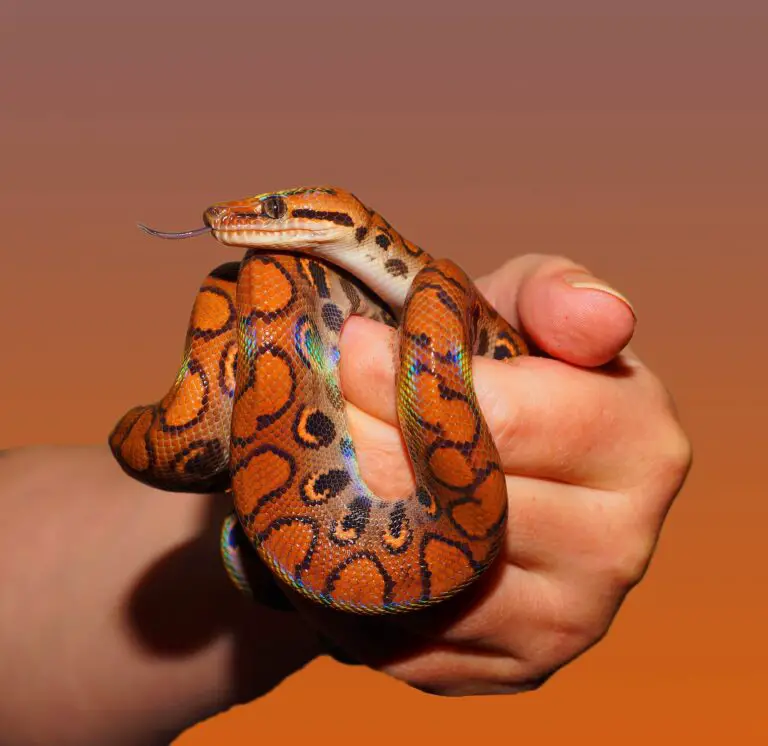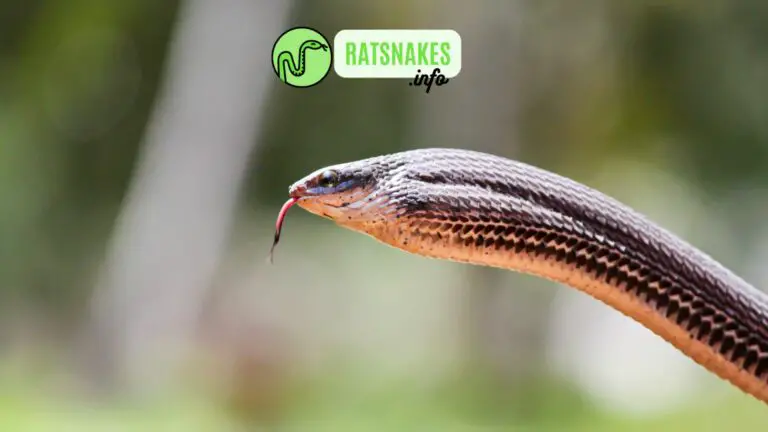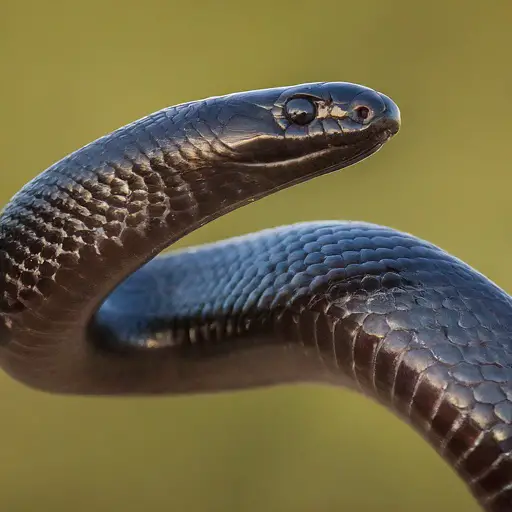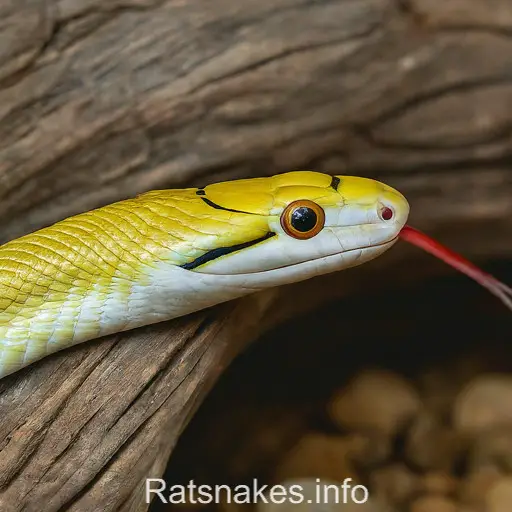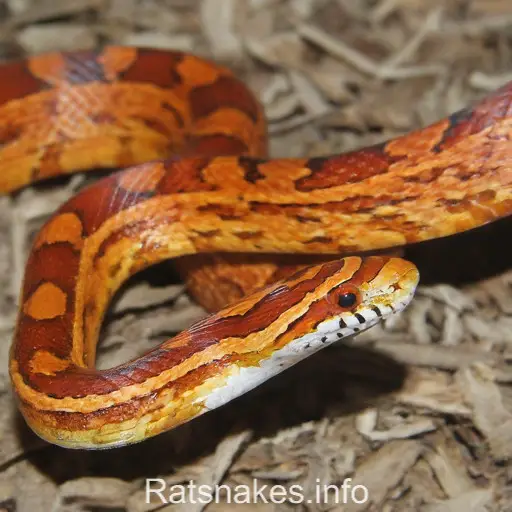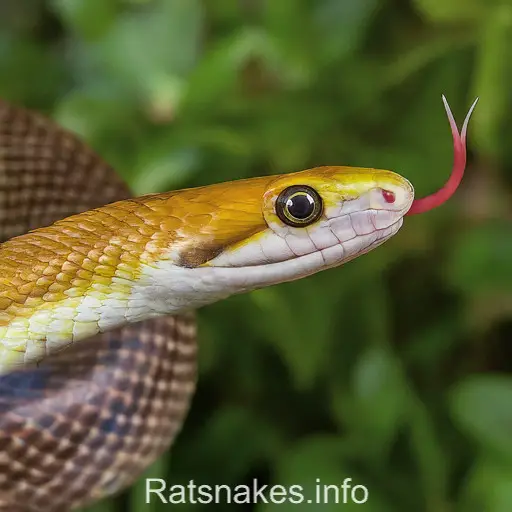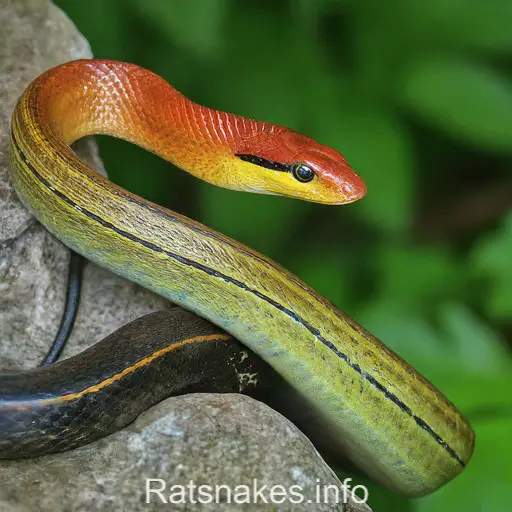
Welcome to our guide on the fascinating red-headed rat snake! These striking serpents, known for their vibrant red heads and sleek bodies, are a sight to behold in the wild. Join us as we delve into the world of these unique reptiles and uncover the secrets of their behavior and habitat.
With their distinctive appearance and intriguing habits, red-headed rat snakes have captured the curiosity of many reptile enthusiasts. In this article, we’ll explore the characteristics that set them apart from other snake species and shed light on their importance in the ecosystem.
Whether you’re a seasoned herpetologist or simply intrigued by the wonders of nature, our exploration of the red-headed rat snake is sure to leave you captivated. Join us on this journey as we unravel the mysteries of these beautiful creatures.
Origins of the Red-Headed Rat Snake
Red-headed rat snakes, scientifically known as Gonyosoma oxycephalum, are native to the forests of Southeast Asia, specifically found in countries like Indonesia, Malaysia, and Thailand.
These sleek reptiles with their vibrant red heads and glossy black bodies have captured the fascination of many reptile enthusiasts around the globe. The red coloration of their heads serves as a warning sign to predators, indicating their potential danger.
With a natural habitat in tropical rainforests and wooded areas, red-headed rat snakes are skilled climbers, often found slithering through the trees in search of prey. Despite their vivid appearance, these snakes are non-venomous and rely on constriction to subdue their meals, which mainly consist of small mammals, birds, and eggs.
In their native lands, red-headed rat snakes play a crucial role in maintaining the ecological balance of their ecosystems. By controlling the population of rodents and birds, they help regulate the delicate harmony of their natural habitats, showcasing the importance of these mesmerizing creatures in the circle of life.
Physical Characteristics
When it comes to Physical Characteristics, the red-headed rat snake stands out in a crowd. They have a distinct appearance that makes them easily recognizable. Here’s a closer look at what sets them apart:
- Vibrant Red Heads: As their name suggests, red-headed rat snakes sport strikingly vibrant red heads that contrast sharply with the rest of their glossy black bodies.
- Sleek and Slender Bodies: These snakes have slender bodies that allow them to move swiftly and gracefully through their tropical rainforest habitats.
- Average Size: Red-headed rat snakes typically grow to lengths between 4 to 6 feet, with some individuals reaching up to 8 feet.
- Elongated and Agile: Their bodies are elongated, helping them navigate the dense foliage of the rainforest canopy with ease.
- Smooth Scales: The scales of red-headed rat snakes are smooth to the touch, contributing to their glossy appearance.
In the next section, we will delve into the diet and hunting habits of these intriguing creatures.
Behavior and Habits
When it comes to Behavior and Habits, the red-headed rat snake is predominantly a nocturnal creature. This means that they are most active during the night, hunting for their prey under the cover of darkness. Ambush predators by nature, they rely on stealth and patience to capture their meals.
Red-headed rat snakes are known for their agile and swift movements, allowing them to navigate through the dense vegetation of their habitat with ease. They are skilled climbers, using their slender bodies and strong muscles to ascend trees and branches in search of prey.
These snakes have a varied diet, feeding on small mammals, birds, eggs, and even other reptiles. Their hunting technique often involves constricting their prey until it suffocates before consuming it whole. This method allows them to efficiently consume their meals without the need for tearing or chewing.
In terms of reproduction, red-headed rat snakes are oviparous, meaning they lay eggs. After a gestation period of several weeks, the female will find a suitable location to deposit her eggs. Once hatched, the young snakes are left to fend for themselves, as these snakes do not exhibit parental care.
Overall, the behavior and habits of the red-headed rat snake showcase their adaptability and survival instincts in their natural habitat. Their unique characteristics make them a fascinating species to study and observe in the wild.
Habitat and Distribution
When it comes to habitat, red-headed rat snakes are typically found in a variety of environments, ranging from forests and woodlands to grasslands and swamps. They are highly adaptable creatures, able to thrive in both moist and dry regions. In terms of distribution, these snakes are primarily located in the southeastern United States, including states like Florida, Georgia, and Alabama.
We can also spot them in parts of Mississippi, South Carolina, and even as far north as North Carolina. Red-headed rat snakes prefer habitats with plenty of cover, such as thick vegetation and dense undergrowth, where they can remain hidden from predators and ambush their prey effectively.
Their distribution in these regions speaks to their ability to adapt to diverse ecosystems, showcasing their resilience as a species. The warm climate and abundance of potential prey in these areas make them well-suited to thrive and maintain stable populations.
The red-headed rat snake’s habitat and distribution are closely tied to their survival strategies and ecological niche. Understanding where these snakes live and how they interact with their surroundings provides valuable insights into their behavior and survival tactics in the wild.
Conservation Efforts
When it comes to Conservation Efforts for the red-headed rat snake, it’s essential to consider their habitat protection. Preserving the diverse environments where these snakes thrive is crucial for their survival. We must focus on maintaining the integrity of forests, woodlands, grasslands, and swamps – the key habitats where red-headed rat snakes can be found.
Educating the public about snake conservation is another vital aspect of safeguarding the red-headed rat snake population. By raising awareness about these fascinating creatures and dispelling common misconceptions, we can foster a greater appreciation for their ecological role.
Collaborative research projects play a significant role in enhancing our understanding of red-headed rat snakes and their conservation needs. By studying their behaviors, movement patterns, and responses to environmental changes, we can develop targeted conservation strategies to ensure their long-term survival.
Efforts to combat habitat destruction, illegal wildlife trade, and poaching are also integral to protecting the red-headed rat snake population. By addressing these threats head-on and enforcing protective measures, we can create a safer environment for these unique snakes to thrive.
Key Takeaways
- Origins: Red-headed rat snakes, scientifically known as Gonyosoma oxycephalum, are native to Southeast Asia, specifically countries like Indonesia, Malaysia, and Thailand.
- Physical Characteristics: These snakes have vibrant red heads, sleek and slender bodies, averaging between 4 to 6 feet in length, and smooth scales contributing to their glossy appearance.
- Behavior and Habits: Red-headed rat snakes are nocturnal ambush predators with agile and swift movements, skilled climbers, and feed on small mammals, birds, eggs, and other reptiles.
- Habitat and Distribution: They are adaptable to various environments ranging from forests to grasslands and are primarily found in the southeastern United States, including states like Florida, Georgia, and Alabama.
- Conservation Efforts: Protecting their habitats, educating the public about snake conservation, collaborative research projects, and combating habitat destruction, illegal wildlife trade, and poaching are crucial for the preservation of red-headed rat snakes.
Conclusion
Protecting the red-headed rat snake is essential for maintaining biodiversity in the southeastern United States. By safeguarding their habitats, raising awareness, and collaborating on research, we can ensure these fascinating snakes thrive for generations to come. Let’s work together to combat threats and preserve the natural balance of our ecosystems.

